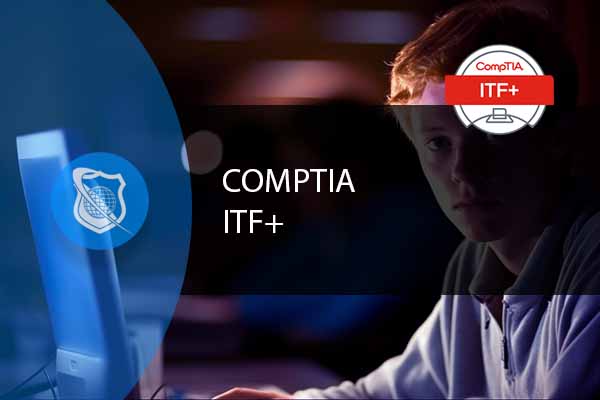Get This Free 7 Day Access To Our CompTIA IT Fundamentals (ITF+) Class Now
For a limited time, enjoy this full-length Free CompTIA IT Fundamentals (FCO-U61) course for 7 days. Just add to your shopping cart and checkout. No credit card required.
Who is our Free CompTIA IT Fundamentals Training Course For?
CompTIA IT Fundamentals training often referred to as ITF+, helps anyone learn about IT. Students learn fundamental skills needed in the IT industry. Areas of IT covered include hardware, software, programming, security, software development, database fundamentals, and infrastructure. This is the ideal place to start for anyone new to the world of IT. It will form the foundation of your learning IT principles and skills. What you learn in this course will carry you forward to more certifications you can gain in the future.
Why Focus on IT Training?
The IT industry is one of the most lucrative markets to enter. Since 2012, ITU has been creating high-quality, high-value online IT training and we’re excited to provide those interested in a career in IT with this free CompTIA IT Fundamentals training. Yes, our ITF+ course truly is free IT training.
Over the past few decades, the IT industry has exploded. The IT industry changes frequently. For anyone looking to start a rewarding career in IT, this ITF+ course is an excellent start. Studies show that the IT industry is growing year on year. Many predict that there will be many IT job roles unfilled over the next few years. Is this industry for you? The free course will help you decide.
Once a student has completed the CompTIA IT Fundamentals, course, the next logical training to take is the Core 1 and Core 2 CompTIA A+ training. Students obtaining an A+ certification carry weight in key IT support-related positions which is often the opening door for progressing in an IT career. CompTIA training by purchasing our Master CompTIA Training series.
About The CompTIA IT Fundamentals Exam (FCO-U61)
The official exam offered by CompTIA for this certification is exam id FCO-U61. The exam assesses a candidate’s knowledge of troubleshooting theory and preventative maintenance. Students look at issues behind problems and resolve them using technical IT skills. Candidates show they can incorporate methods to eliminate technical issues. This is the ideal exam for anyone who’s interested in pursuing an IT career and has a genuine passion for IT. Start your free CompTIA IT Fundamentals training today.
Want to Learn More About the CompTIA IT Fundamentals Course ( ITF+ )?
Learn more about the CompTIA IT Fundamentals (FCO-U61) certification by visiting the CompTIA website
Frequently Asked Questions About Free CompTIA IT Fundamentals Training – ITF+ – (FCO-U61)
What exactly is this Free CompTIA IT Fundamentals Training course all about?
This course is all about learning the basics of IT. It covers fundamental areas such as hardware, software, programming, security, software development, database fundamentals, and infrastructure. By the end of this course, you should be well-prepared to take the CompTIA FC0-U61 IT Fundamentals exam.
Who is this Free IT course for?
Anyone who wants to dive into the IT world can take this course. It’s especially great for beginners in IT as it provides fundamental skills needed in the IT industry and forms the foundation of your IT learning journey. What you learn in this course will be useful for more certifications you may want to pursue in the future.
How long do I have access to this course for free?
ou’ll have free access to this course for 7 days. To get started, just add it to your shopping cart and check out. Don’t worry, you won’t need a credit card for this.
Why should I consider IT training?
The IT industry is one of the most profitable markets to enter. By gaining IT skills, you open doors to numerous career opportunities. This course is an excellent starting point for those interested in a career in IT.
Do I need to provide any payment information for the free access?
Nope! You can enjoy this full-length Free CompTIA IT Fundamentals course for 7 days without needing to provide any credit card information. Just add the course to your cart and check out.
What can I expect to learn from this free IT Training course?
This course covers the fundamentals of IT, including hardware, software, programming, security, software development, database fundamentals, and infrastructure. It also teaches you about troubleshooting theory and preventative maintenance. At the end of the course, you’ll be prepared to take the CompTIA FC0-U61 IT Fundamentals exam.





